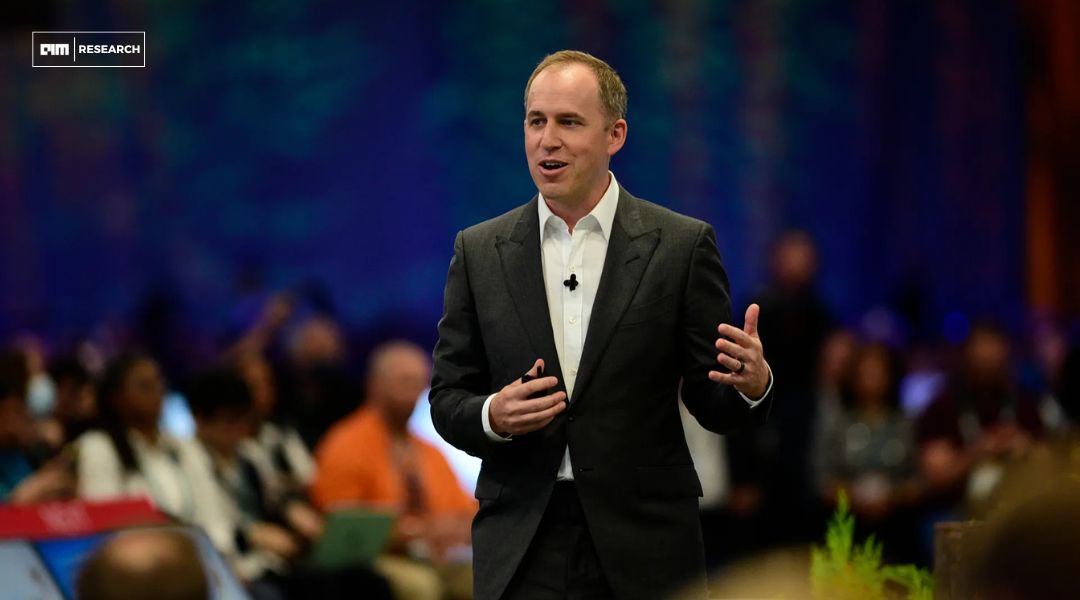
In 2017, Dr. Ali Kashani, co-founder and CEO of Serve Robotics, set out to solve a problem that’s rarely questioned but affects everyone: our overreliance on cars. Cars transport everything from large furniture to small dinner deliveries, creating inefficiencies, emissions, traffic, and accidents. The inefficiency particularly stood out when Kashani considered the massive environmental footprint […]

In 2017, Dr. Ali Kashani, co-founder and CEO of Serve Robotics, set out to solve a problem that’s rarely questioned but affects everyone: our overreliance on cars. Cars transport everything from large furniture to small dinner deliveries, creating inefficiencies, emissions, traffic, and accidents. The inefficiency particularly stood out when Kashani considered the massive environmental footprint of using cars for something as simple as a takeout meal.
Kashani’s solution was unconventional yet elegant—a small, fully autonomous robot designed to navigate sidewalks and deliver lightweight items. His goal was to reduce vehicle-based food deliveries by 5% within five years, which would mean taking 100,000 cars off the road in the U.S. alone. That idea led to the founding of Serve Robotics, a company now on the verge of scaling its impact significantly.
Serve Robotics has raised $80 million via a direct offering of 4.2 million shares of common stock. Backed by institutional investors, the funding will help the company extend its runway through 2026 and scale its fleet from 100 robots operating in Los Angeles to 2,000 robots deployed across multiple U.S. cities by the end of 2025.
The funding marks a critical milestone in Serve’s journey, following $86 million raised in December 2024 through a mix of an at-the-market facility and warrant exercises. In total, the company has secured $247 million in the past 12 months, a testament to its growth potential and investor confidence.
Serve’s CFO, Brian Read, explained the strategic intent behind this latest funding round, emphasizing the company’s commitment to financial prudence. “We’re not taking more money to just burn through it in the next year,” Read told TechCrunch. “This is the long-term coffer to help us as we get beyond these 2,000 robots.”
Unlike previous funding rounds, this infusion of capital positions Serve to self-finance critical equipment investments. Historically, the company relied on equipment financing to grow its fleet, a model that came with interest costs, cash deposits, and security interests tied to the hardware.
“I’ve been trying to get our cost of capital as low as possible,” Read said. “The best way [previously] for us to do that was to finance our robots, which comes with interest costs and deposits and cash locked up and security interests on the hardware. We’ve moved past that now, so we get better cash flow. We have ownership of these robots now, so we’re really giving ourselves some more flexibility in our financial direction.”
By owning its robots outright, Serve is eliminating the costs and constraints of external financing, giving the company the financial flexibility to scale more efficiently.
Serve Robotics was born out of app-based delivery service Postmates six years ago, spinning off as an independent entity focused entirely on robotic delivery. The company’s mission is centered on creating sustainable delivery solutions that alleviate urban congestion, reduce emissions, and minimize traffic accidents.
Today, Serve operates around 100 autonomous robots on the streets of Los Angeles, delivering meals for Uber Eats and convenience items for 7-Eleven. Each robot is equipped with Level 4 autonomy, meaning it can make decisions independently in specific conditions. However, a team of human operators stands by to intervene when necessary—a safeguard against unexpected scenarios in busy urban environments.
The robots have become a familiar, if sometimes controversial, sight on Los Angeles streets. Walk down Melrose Avenue, and you might spot one of these waist-high robots with headlights shaped like blinking eyes and names stenciled on their sides. Despite their utility, the robots have also become the subject of public curiosity, ridicule, and even occasional vandalism. On social media platforms like TikTok, they’ve gained notoriety as quirky participants in the chaotic backdrop of Hollywood.
Serve’s ambitions extend far beyond Los Angeles. In October 2024, the company launched a pilot program in Dallas in collaboration with Wing, exploring a hybrid delivery model that combines sidewalk robots with drones. The trial aims to expand Serve’s understanding of how different delivery modalities can complement each other to enhance efficiency.
With the fresh capital in hand, Serve plans to add 250 more robots to Los Angeles in the first quarter of 2025. By the end of the year, the company expects to deploy 2,000 robots across multiple U.S. cities under its contract with Uber Eats. Achieving full utilization of this fleet is expected to bring Serve to cash-flow positivity from an operational standpoint.
“This funding not only solidifies that approach from today, but also we are now positioning ourselves for what 2026 and 2027 are going to start to look like,” Read added.
Serve’s $80 million funding round reflects not only its growth trajectory but also a disciplined approach to financial management. The company’s shift away from equipment financing is expected to improve cash flow and reduce operational costs. By owning its fleet outright, Serve can better navigate the complexities of scaling its operations while maintaining financial stability. While challenges remain—such as public perception and occasional technical glitches—the company is well-positioned to expand its impact in the years ahead.
📣 Want to advertise in AIM Research? Book here >
Cypher 2024
21-22 Nov 2024, Santa Clara Convention Center, CA
A Vendor Briefing is a research tool for our industry analysts, and an opportunity for a vendor to present its products, services and business strategies to analysts who cover the vendor specifically or a related technology or market.
AIM Research encourages technology vendors and agencies to brief our team for PeMa Quadrants, when introducing a new product, changing a business model, or forming a partnership, merger, or acquisition.


